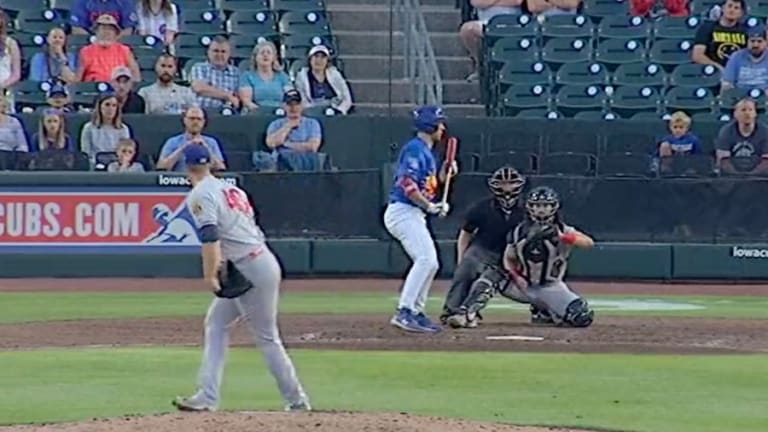
Watch: Saints walk off on rare 'Robot Umpire' challenge vs. Iowa

The Metaverse? Self-driving cars? Robot umpires? The future is crazy. But part of the future is now as the St. Paul Saints walked off in a not-so-traditional way in their 5-2 victory over the Iowa Cubs on Saturday night.
Saints pitcher Josh Winder was trying to close out the game and picked up a pair of strikeouts to open the ninth inning. After allowing the next three batters to reach, Winder appeared to be in trouble, running the count full against Darius Hill.
Saints catcher Chris Williams tapped the side of his mask, the umpire tapped on the top of his head and summoned the automated ball-strike system (ABS) – or "robot umpire" if you prefer –to take a look at the call. The ABS ruled that Winder's pitch clipped the top of the strike zone for strike three and the game was over.
Cubs play-by-play announcer Alex Cohen called the play "anti-climatic" but the reaction was generally positive among the comments on social media.
The automated ball-strike system was first used in the Florida State League in 2021 and was installed as a test run in 11 Triple-A ballparks and the Arizona Fall League last season. The ABS was expanded to all 30 Triple-A stadiums this year with the Pacific Coast League began using the ABS on Opening Day and the International League – where the Saints play – began using it on April 25.
The first three games of a series are considered a "full ABS" game where the robot umpires are completely in charge of calling balls and strikes. In the last three games of a series, the home plate umpire is in charge of balls and strikes but players can challenge a call using the ABS to verify whether a call was correct.
Each team gets three challenges during the game and a team retains a challenge for a correct call. The challenges can only be initiated by the pitcher, hitter or catcher and must be made immediately after an umpire's call. At that point, the umpire learns of the call via an earpiece and the pitch is displayed on the video board.
There are several benefits to the challenge system, which eliminates the need for catchers to aggressively frame pitches to get calls. It also eliminates confrontations between umpires and managers, which speeds up the game and likely saves managers from getting ejected.
In fact, Twins fans could probably think of one game this year where it would have been nice to have a challenge system in place.
Still, there are obstacles to be resolved before the ABS reaches the majors. The size of the strike zone has been one topic as it led to increased walks during its first appearance in 2021 and was adjusted from 19 inches to 17 inches to replicate the exact size of home plate midway through this season.
Those issues are a reason why MLB commissioner Rob Manfred said last month that he did not expect ABS to be used in the major leagues in 2024. But just like the pitch clock and bigger bases – which were used on an experimental basis in the minors before making their debut this season – the ABS could be ready for it's call-up soon, making the future closer than we think.







